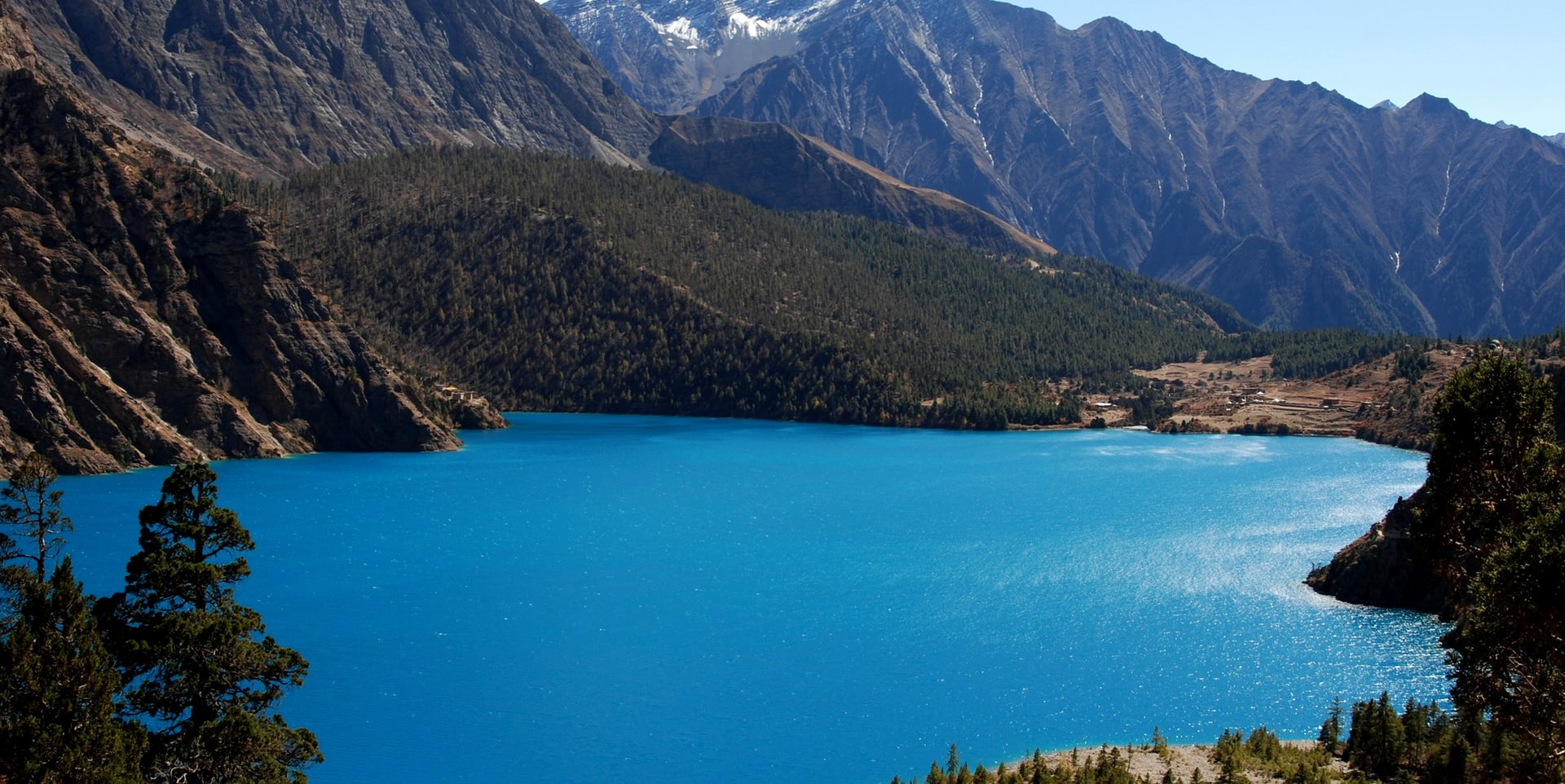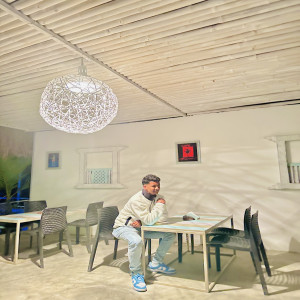Gokyo Lakes Trek
The Gokyo Lakes Trek is an exceptional journey in the Everest region that offers a mesmerizing blend of majestic snowy peaks and the tranquil, emerald waters of the Gokyo Lakes. This trek is a fantastic alternative to the traditional Everest Base Camp trek, providing a less crowded route with equally stunning views and unique geographical features.
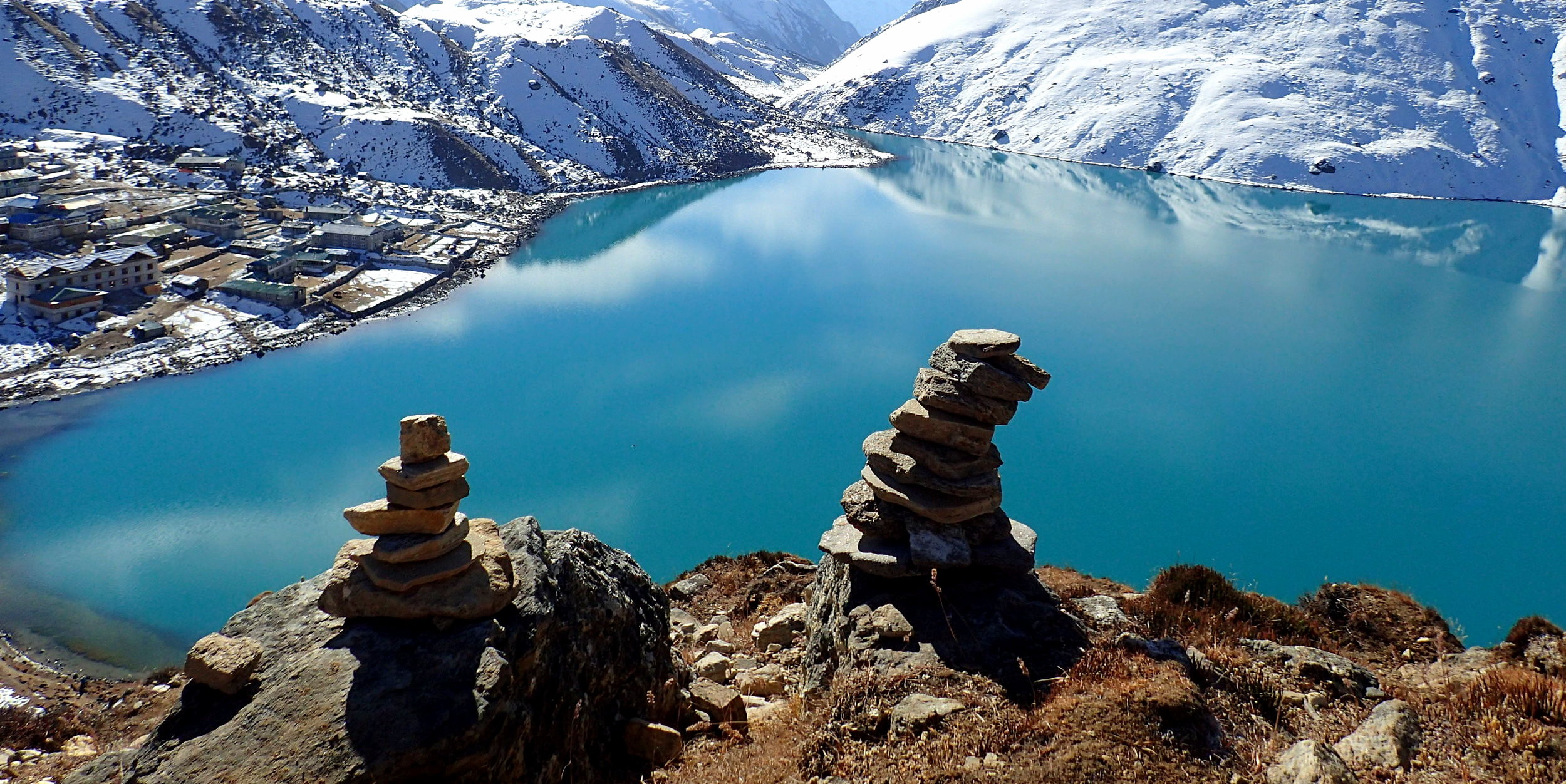
Overview of the Gokyo Lakes Trek
-
Duration: Typically 12 to 15 days, depending on the chosen itinerary and pace of trekking.
-
Difficulty Level: Moderate to challenging, suitable for trekkers who can handle higher altitudes and longer walking days.
-
Best Season: The best times to embark on the Gokyo Lakes Trek are from March to May and from September to November. These months generally offer clear skies, temperate weather, and the best views of the mountains.
Highlights of the Gokyo Lakes Trek
-
Gokyo Lakes: The trek takes you through a series of six turquoise lakes, each situated at a higher altitude than the last. The lakes are considered sacred by both Hindus and Buddhists and are the world’s highest freshwater lake system.
-
Gokyo Ri (5,357m): Climbing Gokyo Ri is a major highlight, offering panoramic views of Everest, Lhotse, Makalu, and Cho Oyu. The viewpoint provides one of the most breathtaking sunrise and sunset views in the Everest region.
-
Ngozumpa Glacier: The largest glacier in the Himalayas, this spectacular glacier is another highlight of the trek, offering dramatic views and a rugged landscape.
-
Renjo La Pass: Some itineraries include crossing the Renjo La pass, which provides stunning views into both the Gokyo Valley and the remote valleys in the west. This pass is less trafficked and offers a peaceful trekking experience.
-
Flora and Fauna: The trek passes through diverse ecosystems, from lush rhododendron forests to sparse high-altitude tundra, home to species such as the snow leopard and Himalayan tahr.
-
Sherpa Culture: Experience the rich culture of the Sherpa people, visiting monasteries and traditional villages. The warm hospitality of the local Sherpa communities adds a profound cultural depth to the trek.
Trekking Route: The trek usually starts with a flight from Kathmandu to Lukla, followed by a trek to Namche Bazaar, the gateway to the high Himalayas. From Namche, trekkers head towards the Gokyo Valley, visiting each of the Gokyo Lakes, and if the itinerary allows, ascending Gokyo Ri for spectacular mountain views. Depending on the route and time available, some trekkers choose to combine this trek with other routes like the Everest Base Camp or passes like Cho La for a more extended exploration.
The Gokyo Lakes Trek is a must-do for adventure seekers looking for an alternative route in the Everest region that offers stunning natural beauty, fewer crowds, and a deep dive into the high-altitude ecosystems of the Himalayas.
Gosaikunda Lake Trek
The Gosaikunda Lake Trek is an enriching and picturesque journey to one of Nepal's most sacred lakes, situated in the Langtang National Park. This trek is particularly revered among both Hindus and Buddhists, as Gosaikunda Lake is believed to have been created by Lord Shiva. It is an excellent choice for those seeking a spiritual journey in addition to a physical challenge, all within a relatively short trek.
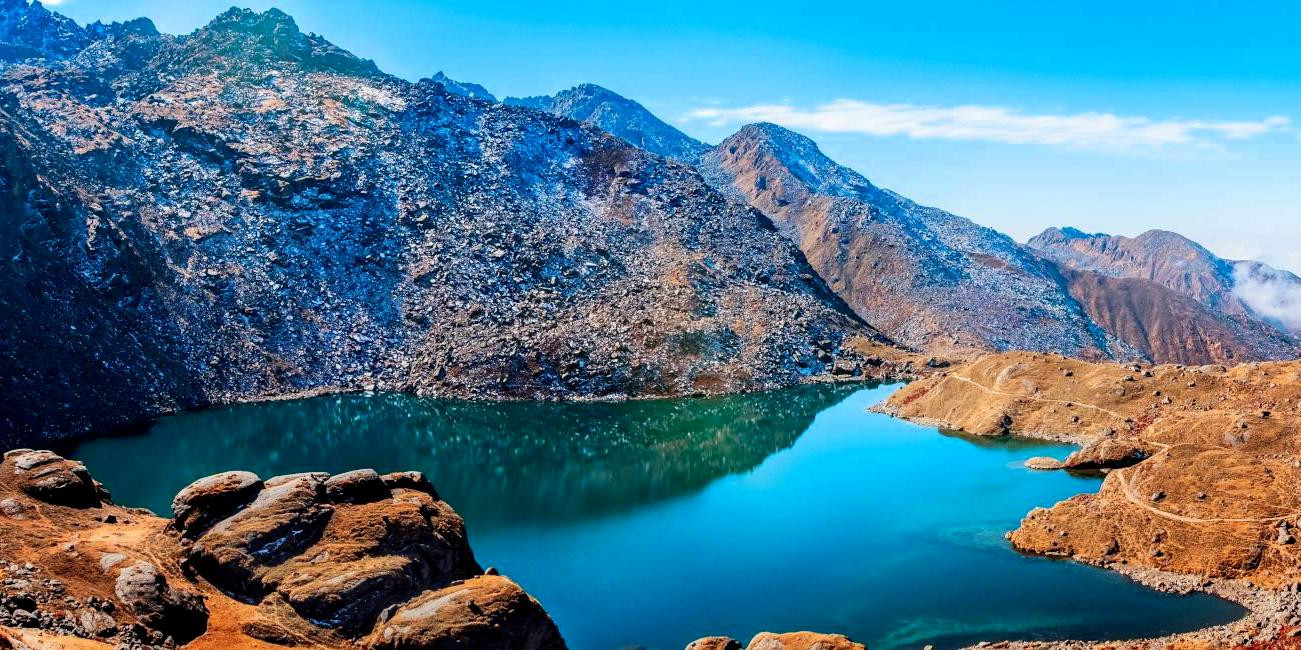
Overview of the Gosaikunda Lake Trek
-
Duration: Typically 7 to 9 days, making it an ideal trek for those with limited time but eager to experience the Himalayas.
-
Difficulty Level: Moderate. It involves some long trekking days at high altitudes but is suitable for reasonably fit individuals.
-
Best Season: The best times for the Gosaikunda Lake Trek are from March to May and from September to November, when the weather is generally clear and warm, offering the best visibility and conditions.
Highlights of the Gosaikunda Lake Trek
-
Sacred Gosaikunda Lake: Situated at an altitude of about 4,380 meters, the lake is the centerpiece of the trek and a significant pilgrimage site during the full moon in August, when thousands of pilgrims visit to celebrate the festival of Janai Purnima.
-
Diverse Landscapes: The trek takes you through lush forests and traditional Tamang villages at lower altitudes, and as you climb higher, the scenery changes to stark, rugged highlands with stunning views of the Himalayas.
-
Laurebinayak Pass (4,610m): Crossing the Laurebinayak Pass offers some of the most dramatic panoramas of the Langtang and Annapurna ranges, as well as views into Tibet.
-
Rich Flora and Fauna: As part of the Langtang National Park, the area is rich in biodiversity, including the red panda, Himalayan tahr, and diverse bird species.
-
Cultural Experience: The trek provides insight into the lives of the local Tamang and Sherpa communities, whose customs and traditions have been influenced by Tibetan culture.
Trekking Route: The trek usually starts with a drive from Kathmandu to Dhunche or Syabrubesi, from where trekkers begin their hike. The trail ascends to the high alpine lakes of Gosaikunda, passing through forests and traditional villages. After spending time at the lakes and potentially attending the pilgrimage if timed right, trekkers typically return via Lauribina Pass, which offers a challenging descent and stunning landscapes before closing the loop back at Dhunche.
The Gosaikunda Lake Trek is not just a journey through nature but also a profound cultural and spiritual experience. This trek is particularly special for those interested in experiencing a significant cultural festival in a stunning, high-altitude setting.
Tilicho Lake Trek
The Tilicho Lake Trek is an exhilarating journey to one of the highest lakes in the world, Tilicho Lake, nestled at an altitude of 4,949 meters in the Annapurna region of Nepal. This trek is an extension of the classic Annapurna Circuit and is famed for its breathtaking scenery and challenging trails. It offers a unique blend of natural beauty and adventure, making it a must-try for avid trekkers.
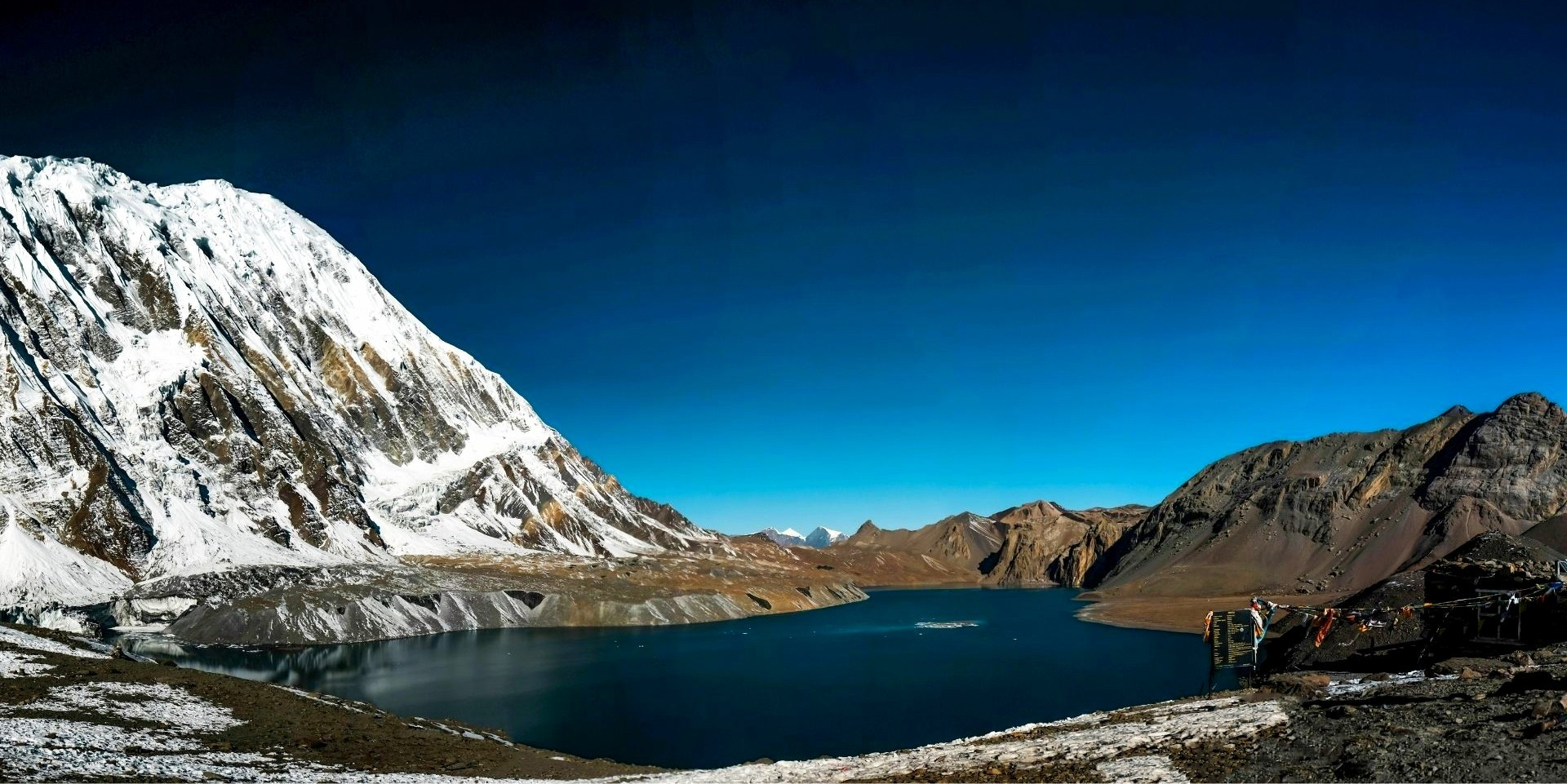
Overview of the Tilicho Lake Trek
-
Duration: Approximately 10 to 14 days, depending on the starting point and whether it's combined with parts of the Annapurna Circuit.
-
Difficulty Level: Moderate to challenging. This trek involves long days of walking in high-altitude and remote areas, demanding good physical fitness and stamina.
-
Best Season: The best seasons to undertake the Tilicho Lake Trek are during the pre-monsoon months of March to May and the post-monsoon months of September to November, when the weather is most stable and the skies are clear.
Highlights of the Tilicho Lake Trek
-
Tilicho Lake: The lake is the highlight of the trek, known for its striking blue waters and dramatic mountain backdrop. It's also considered sacred by many Hindu pilgrims.
-
Diverse Terrain: The trek traverses through varied landscapes, from lush rhododendron forests to arid, cliff-side trails of the Manang district, offering a dynamic trekking experience.
-
Mesmerizing Views: Offers unparalleled views of the Annapurna massif, Dhaulagiri, Manaslu, and other Himalayan giants.
-
Crossing the Thorong La Pass: Many trekkers combine the Tilicho Lake trek with a crossing of the Thorong La Pass (5,416m), one of the highest and most famous passes in the world, providing an added challenge and scenic reward.
-
Cultural Insight: The trek provides insights into the life and traditions of the Manangi people, whose unique culture and lifestyle have been shaped by the harsh conditions of high-altitude living.
Trekking Route: The trek usually begins in Besisahar or Manang, following the Annapurna Circuit route initially. From Manang, trekkers divert towards the Tilicho Base Camp, trekking along the scenic trail that includes crossing the challenging Mesokanto La or Tilicho Pass. After spending time at Tilicho Lake, the trek either returns to the Annapurna Circuit to continue towards Thorong La or retraces back to Jomsom, concluding with a flight or drive back to Pokhara.
The Tilicho Lake Trek is a rewarding journey for those looking to explore the less-trodden paths of the Annapurna region. It combines the thrill of adventure trekking with the beauty of one of the highest lakes in the world, creating an unforgettable experience in the heart of the Himalayas.
Rara Lake Trek
The Rara Lake Trek offers a rare opportunity to experience one of Nepal’s most stunning natural treasures—Rara Lake. Nestled in the remote northwest of Nepal, this trek takes you to the largest lake in the country, located within the protected boundaries of Rara National Park. Known for its breathtaking beauty and tranquil surroundings, Rara Lake is a perfect destination for those looking to escape the more frequented trekking routes and enjoy an off-the-beaten-path adventure.
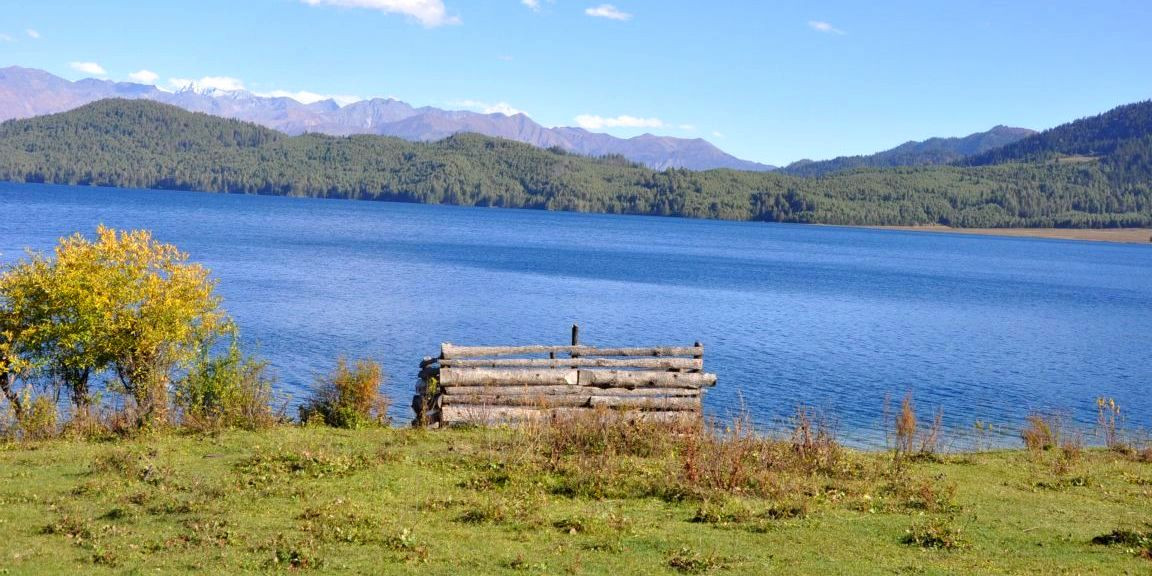
Overview of the Rara Lake Trek
-
Duration: The trek usually takes about 10 to 14 days, depending on the route taken and transportation options.
-
Difficulty Level: Moderate. Although the trek doesn't involve high altitudes or steep climbs, it requires a good level of physical fitness due to its remote nature and the length of the trek.
-
Best Season: The best times to undertake the Rara Lake Trek are during the spring (March to May) and autumn (September to November) months, when the weather is most favorable and the views are clearest.
Highlights of the Rara Lake Trek
-
Rara Lake: The lake itself is the main highlight, renowned for its stunning blue waters and serene environment. It covers an area of about 10.8 square kilometers and lies at an altitude of 2,990 meters. The lake changes color throughout the day, from deep blue to turquoise and emerald, making it a photographer’s paradise.
-
Rara National Park: This trek provides an opportunity to walk through the Rara National Park, which is home to a variety of wildlife including the Himalayan black bear, leopard, Himalayan goral, and numerous bird species.
-
Incredible Biodiversity: The area around Rara Lake is known for its incredible biodiversity, which includes a variety of flora and fauna unique to this region.
-
Cultural Experience: The trek offers insights into the lives and traditions of the local Jumla and Mugu districts' communities, which are markedly different from those in other parts of Nepal.
-
Scenic Flights: The trek often includes flights to and from Nepalgunj to Jumla or directly to the Talcha airstrip near the lake, offering spectacular views of the terrain below.
Trekking Route: The journey to Rara Lake typically begins with a flight from Kathmandu to Nepalgunj, followed by another flight to Jumla, which serves as the trek's starting point. From Jumla, trekkers walk through beautiful alpine forests and remote villages to reach the lake. An alternative route can include driving from Kathmandu to Surkhet and then flying or continuing to drive to Jumla. The trek around the lake provides stunning vistas and peaceful walking trails, with a few days spent exploring the lake and its surroundings before making the return journey.
The Rara Lake Trek is ideal for those looking to experience natural beauty, tranquility, and the cultural richness of the remote regions of Nepal. It promises an unforgettable adventure with stunning landscapes and a serene atmosphere, far removed from the hustle and bustle of more commercial trekking routes.
Panch Pokhari Trek
The Panch Pokhari Trek is a serene and spiritually enriching journey to a cluster of five sacred lakes in the Sindhupalchok district of Nepal. Named after these lakes, "Panch Pokhari" translates to "five ponds" in Nepali. This trek is less frequented by tourists, making it a perfect choice for those seeking solitude and a deep connection with nature. The region holds great religious significance, particularly among the local Sherpa and Tamang communities, and is a site of annual pilgrimages during the Janai Purnima festival in August.
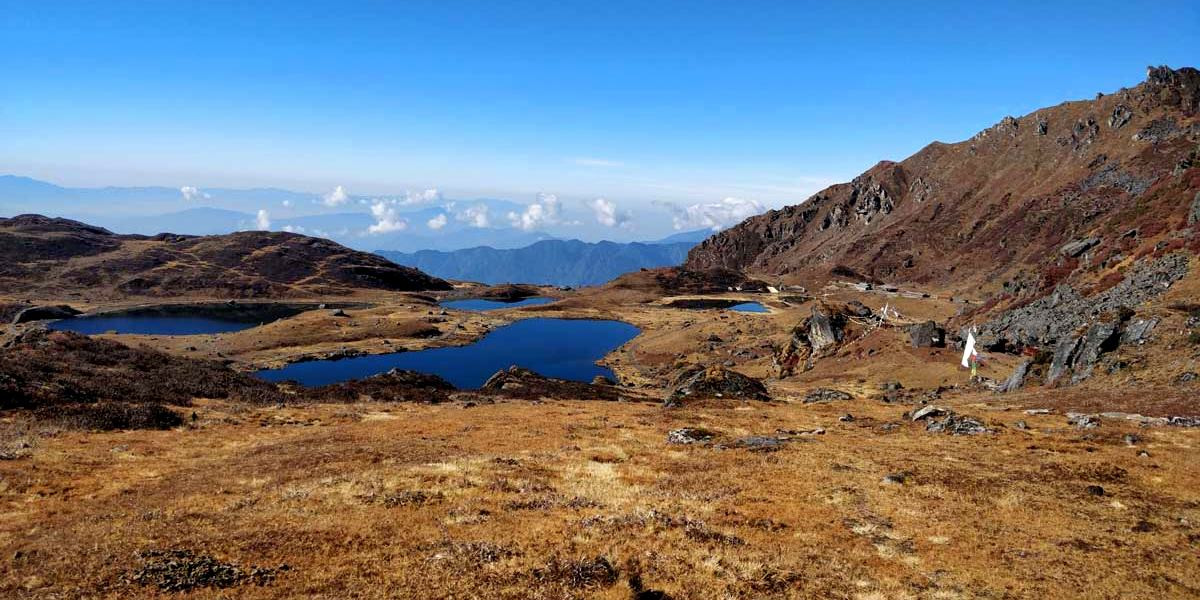
Overview of the Panch Pokhari Trek
-
Duration: Typically 12 to 14 days, depending on the chosen route and pace.
-
Difficulty Level: Moderate to challenging, mainly due to its remote location and the lack of developed tourist infrastructure.
-
Best Season: The best times to embark on the Panch Pokhari Trek are during the spring (March to May) and autumn (September to November). These months offer the best weather conditions and clear skies for optimal mountain views.
Highlights of the Panch Pokhari Trek
-
Sacred Lakes: The five lakes at Panch Pokhari are the trek’s main highlight, each offering tranquil waters and a spiritual ambiance. The area is a significant pilgrimage site, especially during the Janai Purnima festival when hundreds of pilgrims visit to perform rituals and cleanse themselves spiritually.
-
Stunning Mountain Views: The trek offers panoramic views of Jugal Himal, Langtang, Rolwaling, and even distant views of Mount Everest on clear days.
-
Rich Biodiversity: The route traverses through diverse ecosystems, from lush rhododendron forests to alpine landscapes, providing habitats for a variety of wildlife.
-
Cultural Experience: Trekking through traditional Tamang and Sherpa villages offers insights into their unique cultures, traditions, and lifestyles. The hospitality of these communities adds a warm and enriching dimension to the trek.
-
Isolation and Tranquility: Unlike more commercialized treks, Panch Pokhari offers a peaceful trekking experience, allowing trekkers to enjoy the natural beauty without the crowds.
Trekking Route: The trek typically starts with a drive from Kathmandu to Chautara, the headquarters of Sindhupalchok district, which is the usual starting point for the trek. From there, the trail passes through several rural villages before ascending to the high altitude lakes. The route offers a mix of cultural experiences and natural beauty, with stops in traditional villages such as Bhotang, Nasim Pati, and Tupi Danda. After reaching and exploring the lakes, most itineraries loop back to Chautara or continue to Melamchi Pul Bazar from where transport to Kathmandu is available.
The Panch Pokhari Trek is ideal for those looking to explore a spiritual and natural landscape away from the busier trekking paths. It offers a profound sense of peace and solitude, paired with breathtaking views and deep cultural immersion.
Khopra Danda Khayar Lake Trek
The Khopra Danda Khayar Lake Trek is one of the newer and less trodden paths in the Annapurna region of Nepal, offering an exceptional blend of solitary trails, stunning panoramic views, and cultural immersion. This trek not only presents an opportunity to experience the majestic beauty of the Himalayas but also to visit the sacred Khayar Lake, which is a significant site of pilgrimage during the annual Janai Purnima festival.
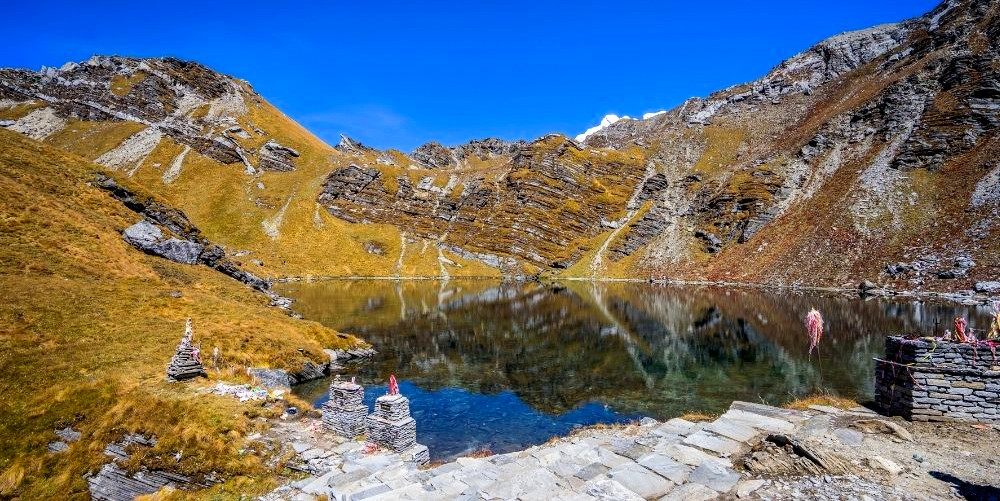
Overview of the Khopra Danda Khayar Lake Trek
-
Duration: The trek typically spans about 13 to 15 days, depending on the specific route and side trips chosen.
-
Difficulty Level: Moderate. While it includes some challenging sections, the trek is generally manageable for those with good physical fitness and some trekking experience.
-
Best Season: The best seasons to undertake the Khopra Danda Khayar Lake Trek are spring (March to May) and autumn (September to November), when the weather is favorable, and the views are clear.
Highlights of the Khopra Danda Khayar Lake Trek
-
Khopra Ridge: One of the trek’s major highlights is the Khopra Ridge itself, offering some of the best sweeping views of the Annapurna and Dhaulagiri ranges.
-
Khayar Lake: Situated at an altitude of approximately 4,600 meters, Khayar Lake is both a natural wonder and a spiritual site. During the Janai Purnima festival, it becomes a hub of religious activity as pilgrims gather to perform rituals.
-
Remote Villages: The trek routes through several remote villages, where trekkers can experience the authentic lifestyles and hospitality of the Gurung and Magar communities.
-
Rich Biodiversity: The trail passes through rhododendron forests, alpine meadows, and pastures that are home to diverse flora and fauna, including the possibility of sighting rare species such as the snow leopard.
-
Trekker’s Lodges and Community Teahouses: Unlike more popular routes, this trek offers the chance to stay in community-managed lodges and teahouses, supporting local economies directly.
Trekking Route: The journey typically begins from Nayapul, a short drive from Pokhara, following the early part of the Annapurna Base Camp trail. Diverging from the main trail, trekkers head to Ghandruk, one of the largest Gurung villages, and continue to Tadapani and Dobato before reaching Khopra Danda. From Khopra Danda, an excursion to Khayar Lake is a challenging yet rewarding hike, offering spiritual solace and stunning landscapes. The return route might pass through Swanta Village, providing a different perspective of the region’s beauty and cultural fabric.
The Khopra Danda Khayar Lake Trek is ideal for those seeking a tranquil trekking experience away from the crowded trails, with a unique combination of natural beauty, cultural encounters, and spiritual enrichment. This trek offers a deep dive into the heart of the Himalayas, making it a memorable adventure for all who undertake it.
Tips for Best Lake Treks in Nepal
Nepal can be a transformative experience, blending adventure with stunning natural beauty and cultural insights. Here are some essential tips to ensure you have the best experience on your lake trek in Nepal:
Choose the Right Season
-
The best times for lake treks in Nepal are during the pre-monsoon spring months (March to May) and the post-monsoon autumn months (September to November). During these periods, the weather is generally stable, offering clear skies and the best views. Monsoon season (June to August) is less ideal due to heavy rains and potential landslides, while winter (December to February) can be very cold, especially at higher altitudes.
Proper Acclimatization
- High-altitude sickness can affect anyone, regardless of fitness level. Schedule adequate acclimatization days in your itinerary, particularly for treks that go above 3,500 meters, such as the Gokyo Lakes or Tilicho Lake treks. Listen to your body and take symptoms of altitude sickness seriously.
Physical Preparation
- These treks can be physically demanding, with multiple days of walking in rugged terrain and thin air. Engage in regular cardiovascular training like running, cycling, and hiking several months before your trek. Strength training, especially for legs and core, can also be beneficial.
Gear and Equipment
-
Invest in good quality trekking boots that are well broken-in to avoid blisters.
-
Pack layers of clothing to accommodate the fluctuating temperatures — include thermal base layers, fleece, a down jacket, and a waterproof outer layer.
-
A comfortable and supportive backpack, sleeping bag suitable for cold temperatures, and a hiking pole can also enhance your trekking experience.
Travel Insurance
- Obtain travel insurance that covers high-altitude trekking and includes emergency evacuation and hospital treatment. This is crucial as trekking in remote areas can lead to situations where you might need immediate medical help.
Hydration and Nutrition
-
Drink plenty of water to stay hydrated. Use water purification tablets or a water filter to treat water from streams before drinking.
-
Eat a balanced diet rich in carbohydrates and protein to maintain your energy levels. Energy bars, dried fruits, and nuts are great snacks to keep you fueled.
Guides and Porters
- Hire a knowledgeable local guide and porters through a reputable trekking company. Not only does this support the local economy, but it also enhances your trekking experience with insights into the local culture and ensures that you have navigation and language support.
Respect Local Customs and Environment
-
Learn about and respect local customs and traditions. Always ask permission before taking photos of people or religious sites.
-
Practice Leave No Trace principles: carry out what you carry in, avoid single-use plastics, and stay on designated trails to minimize environmental impact.
Stay Connected
- While remote areas may not always have cell service, consider renting a satellite phone for emergencies, especially on more isolated treks like the Rara Lake Trek.
Mental Preparation
- Be prepared for the mental challenges of long-distance trekking. Patience and a positive attitude can greatly enhance your experience, especially during tough days.
By following these tips, you'll be well-prepared to tackle some of the best lake treks in Nepal, enjoying not only the physical journey but also the breathtaking landscapes and rich cultural encounters along the way.
Ideal Time for Best Lake Treks in Nepal
Choosing the ideal time for lake treks in Nepal is crucial for ensuring a pleasant and safe trekking experience. The country’s distinct seasons each offer different advantages and challenges. Here are the best times to embark on lake treks in Nepal:
Pre-Monsoon (Spring) Season: March to May: Spring is one of the most popular times for trekking in Nepal, including the lake treks. During this period, the weather gradually warms, making daytime temperatures pleasant for trekking. This season offers several advantages:
-
Clear Skies: The visibility is generally excellent, with clear blue skies providing stunning views of the Himalayan peaks.
-
Moderate Temperatures: Daytime temperatures are comfortable, although it can still be quite cold at higher altitudes, especially at night.
-
Flora in Bloom: The trails are often lined with rhododendrons and other wildflowers in full bloom, adding a spectacular display of color to the trek.
Post-Monsoon (Autumn) Season: September to November: Autumn is considered the best overall season for trekking in Nepal due to its stable weather and clear mountain views. Key aspects include:
-
Stable Weather: Post-monsoon, the weather stabilizes, and the skies clear up, offering some of the best visibility of the year. This is ideal for photography and enjoying panoramic views.
-
Cooler Temperatures: Although the temperatures start to drop, especially in November, the weather is generally dry and sunny during the day, providing excellent trekking conditions.
-
Cultural Festivals: This season coincides with some of Nepal’s most significant festivals, including Dashain and Tihar, offering trekkers a unique cultural experience.
Winter Season: December to February
Winter trekking in Nepal is less common due to the cold weather, which can be quite severe, especially at higher altitudes near the lakes:
-
Challenges: High-altitude lakes like Tilicho, Gokyo, and others are often inaccessible due to snow and the risk of avalanches increases. Temperatures can drop well below freezing.
-
Advantages: Fewer tourists result in quieter trails and more solitude. Also, the landscapes are strikingly beautiful, with the mountains covered in snow.
Monsoon Season: June to August
-
Monsoon season is generally considered the least favorable time for trekking in Nepal due to the following reasons:
-
Rain and Visibility: Heavy rains are common, especially in June and July, which can lead to slippery trails, leeches, and obscured mountain views.
-
Landslides and Floods: There is an increased risk of landslides and floods in the trekking regions, which can disrupt travel plans.
For the best experience on lake treks in Nepal, the ideal times are during the spring (March to May) and autumn (September to November) seasons. These periods offer the best combination of weather, visibility, and trail conditions, making them the most popular and recommended times for trekking. If you're prepared for the cold and equipped for potentially challenging conditions, late autumn and early winter might also offer a unique trekking experience with fewer crowds and stunning snowy landscapes.
Nepal's best lake treks offer an unforgettable adventure combining breathtaking scenery, cultural richness, and a chance for spiritual reflection. From the serene Gokyo Lakes to the sacred Gosaikunda and the remote Rara Lake, each provides unique experiences. The ideal times for these treks are during the spring (March to May) and autumn (September to November) when the weather is most favorable. Whether you're seeking solitude, scenic beauty, or a deeper connection with nature, these treks are perfect for exploring the majestic Himalayas and experiencing the warmth of Nepalese hospitality. With proper preparation and respect for local customs, these treks can be transformative experiences.
FAQs for Best Lake Treks in Nepal
Q: What are the best lake treks in Nepal?
A: The most renowned and picturesque lake treks in Nepal include the Gokyo Lakes Trek, Gosaikunda Lake Trek, Tilicho Lake Trek, Rara Lake Trek, Panch Pokhari Trek, and Khopra Danda Khayar Lake Trek.
Q: When is the best time to go on a lake trek in Nepal?
A: The optimal times for lake treks in Nepal are during the pre-monsoon season (March to May) and the post-monsoon season (late September to November), offering stable weather and clear skies.
Q: Do I need a guide for lake treks in Nepal?
A: While not mandatory for all treks, hiring a guide is advisable, especially for more challenging or remote treks like the Tilicho Lake and Gokyo Lakes, to ensure safety and enhance the trekking experience.
Q: Are permits required for lake treks in Nepal?
A: Yes, most lake treks require a TIMS (Trekkers' Information Management System) card and specific conservation area or national park permits, depending on the trek.
Q: How do I prepare for high altitude during these treks?
A: Acclimatize properly with rest days, ascend slowly, and stay hydrated. Be aware of altitude sickness symptoms and descend or seek medical assistance if symptoms occur.
Q: What are the accommodations like on these treks?
A: Accommodations range from basic teahouses with shared facilities in more popular areas to primitive camping setups in remote areas. Advance booking is recommended during peak seasons.
Q: Can I swim in the lakes during these treks?
A: Swimming is generally not recommended and often prohibited in sacred lakes such as Gosaikunda. Always respect local guidelines and cultural sensitivities.
Q: How can I respect local culture during my trek?
A: Learn about and adhere to local customs, dress modestly, seek permission before photographing people, avoid public displays of affection, participate in local traditions, and support the community by purchasing local crafts.
For the Nepal tour, please click here.
If you are looking for different kinds of Nepal Tours or Trekking Packages, feel free to contact us.
